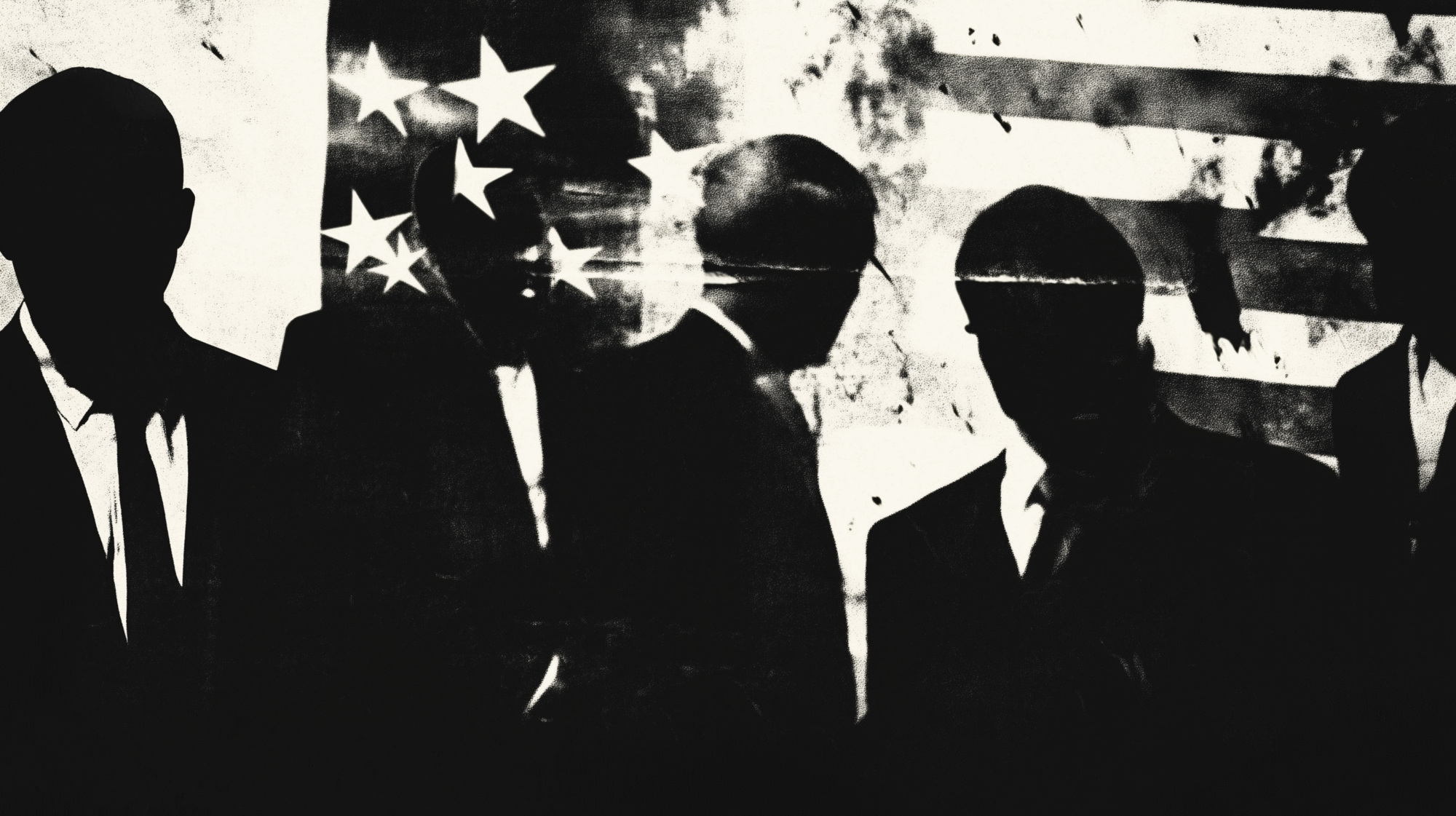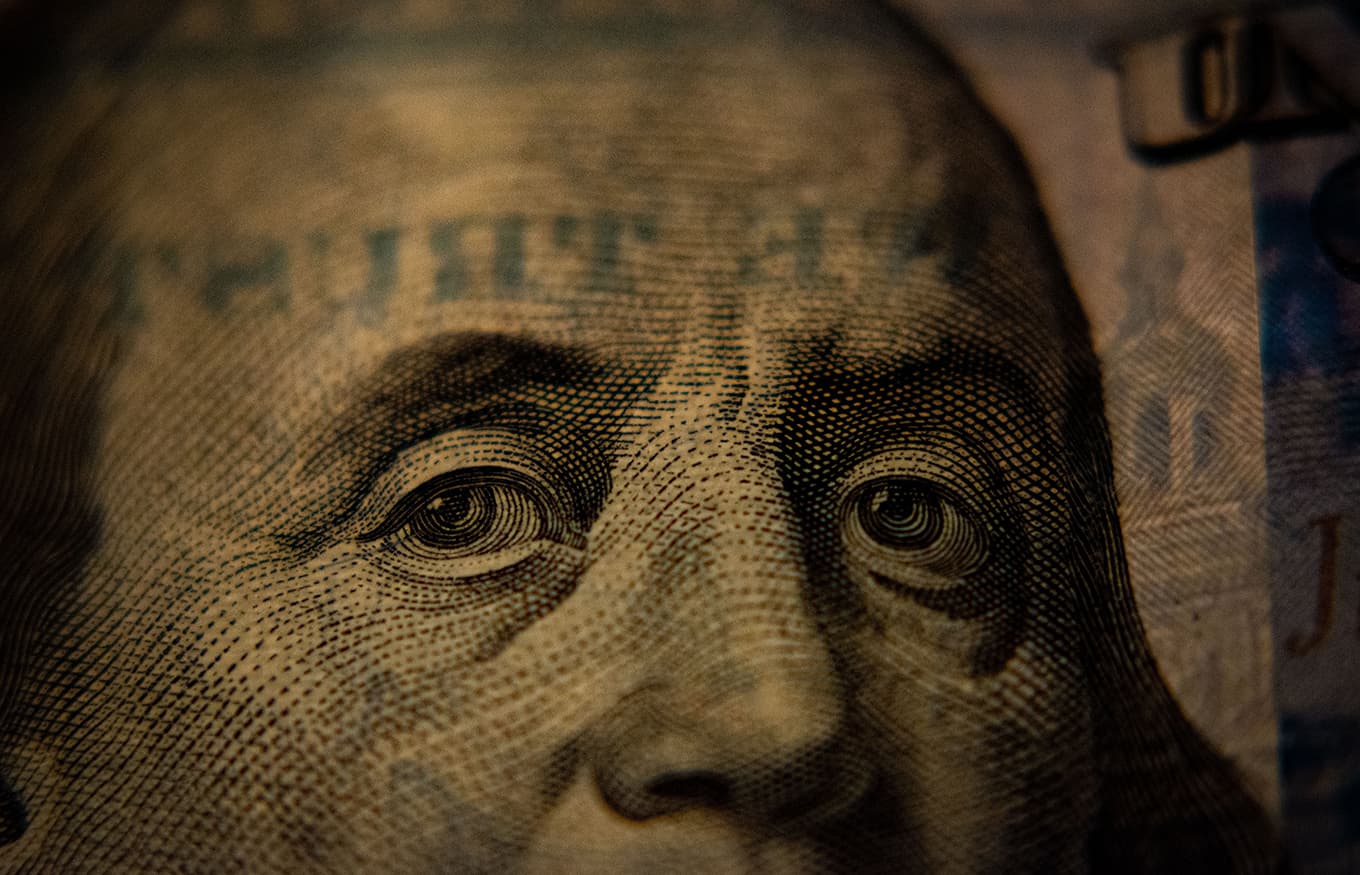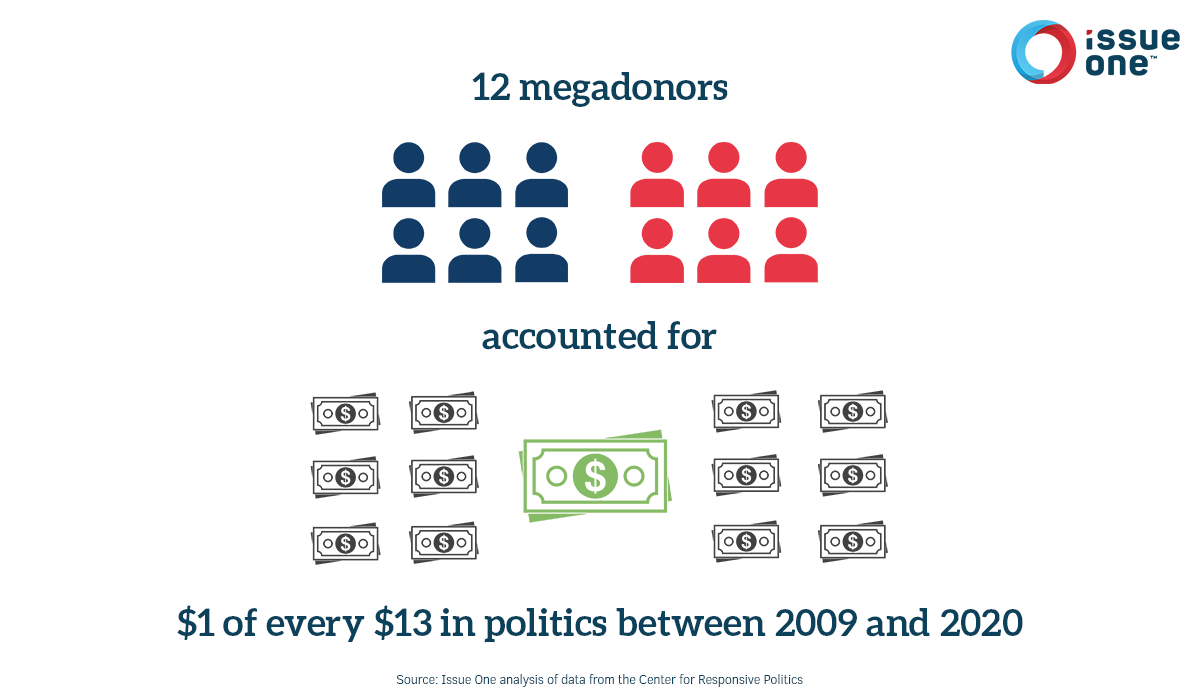
As Congress debates potential changes to the nation’s campaign finance system designed to empower ordinary Americans, new research from Issue One shows the extent to which wealthy, overwhelmingly white donors dominate political giving in the post-Citizens United era.
In fact, just 12 megadonors — at least eight of whom are billionaires — contributed a combined $3.4 billion to federal candidates and political groups between January 2009 and December 2020, according to data provided to Issue One by the nonpartisan Center for Responsive Politics, which tracks money in federal elections.
That sum includes about $1.4 billion that billionaires Michael Bloomberg, a former mayor of New York City, and Tom Steyer, a former hedge fund manager from California, contributed from their own funds to their unsuccessful 2020 presidential campaigns. Bloomberg alone sunk $1.09 billion of his own funds into his failed presidential bid.
The other $2 billion in political contributions by these 12 megadonors — some of whom are individuals and some of whom are married couples — flowed to federal candidates and political party committees like the Democratic National Committee and Republican National Committee, as well as to super PACs, which, unlike candidates and political parties, are legally allowed to accept contributions of unlimited amounts.
The $3.4 billion contributed by the top 12 megadonors — six of whom generally supported Democrats and six of whom generally supported Republicans — amounts to 7.5% of the $45 billion that all federal candidates and political groups raised between January 2009 and December 2020.
Put another way, this means that 12 megadonors and their spouses — a total of 19 individuals — accounted for about $1 of every $13 in federal politics between January 2009 and December 2020.
“This research shows the alarming influence of just a handful of wealthy megadonors in our political system,” said Issue One Founder and CEO Nick Penniman. “Our government can’t be responsive to all Americans if our elected officials are beholden to the elite donor class.”
Added Issue One Executive Director Meredith McGehee: “Americans are losing faith in our democratic institutions. They see political gridlock and a broken campaign finance system that gives undue influence to billionaires and millionaires across the political spectrum, while the vast majority of ordinary citizens lack a seat at the table. Congress must urgently act to restrain the growing influence of money in our politics and build a system that truly represents all Americans, not just the wealthy few.”
Who are these wealthy donors? The full list is detailed in the table below.
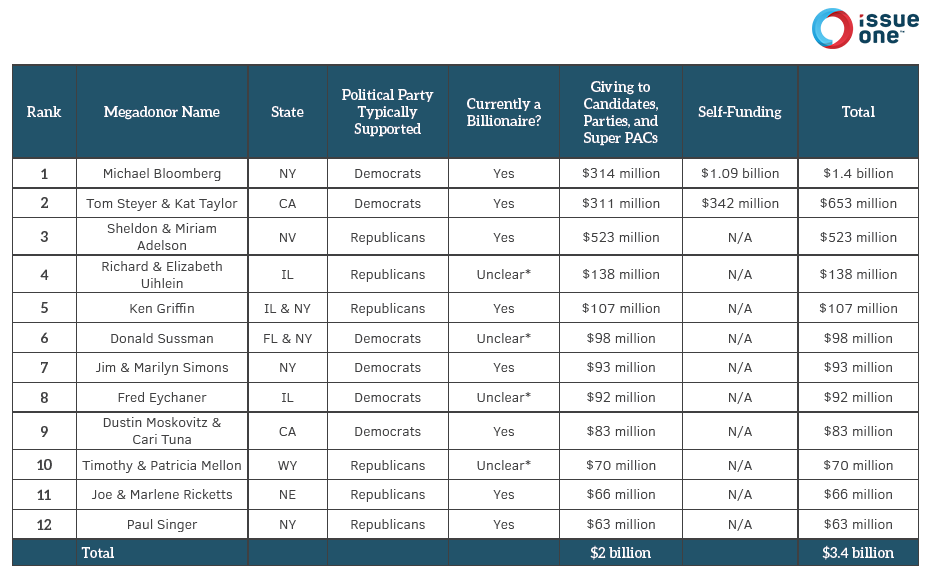
* While this donor is not currently ranked as a billionaire according to Forbes, since January 2009, they have been described in the press as a billionaire multiple times.
* Note: Campaign finance figures were obtained by Issue One from the Center for Responsive Politics and reflect contributions between January 2009 and December 2020.
In a country in which a long history of structural racism has fueled a dramatic wealth and income gap between white Americans and Americans of color, it is perhaps not surprising that the top political donors are overwhelmingly white and rich.
Indeed, all of the 12 top political megadonors are white.
Examining the 100 Top-Giving ZIP Codes
Journalists, academics, and others have long examined campaign finance data at the ZIP code level to understand trends about who is — and who isn’t — making political contributions. For instance, in a series of reports in the late 1990s and early 2000s, Public Campaign noted a “pattern of exclusion from the political money game in neighborhoods where the population is predominantly people of color.” More than a decade after the Citizens United decision, it’s clear this Supreme Court ruling has only exacerbated this trend.
Notably, the top 12 megadonors and their spouses accounted for roughly 25% of the money contributed by all residents of the 100 top-giving ZIP codes, which were typically both more white and more affluent than the nation as a whole.
While 40% of Americans are people of color, people of color account for just 30% of the population of the typical top-giving ZIP code, according to an Issue One analysis of census data. And in these top-giving ZIP codes, households typically made more than 1.7 times as much money as the median American family.
Residents of these 100 ZIP codes account for just a sliver of all Americans. Census data shows that these 100 ZIP codes are home to approximately 2.5 million people — less than 1% of the entire population of the United States.
Yet all donors living in the 100 top-giving ZIP codes accounted for about 20% of the $45 billion that federal candidates and political groups raised between January 2009 and December 2020, according to data provided to Issue One by the Center for Responsive Politics.
In many cases, much of the giving in the top-giving ZIP codes is attributable to a handful of wealthy megadonors, if not a single megadonor. This was true in ZIP codes that are predominantly white as well as in the smattering of the 100 top-giving ZIP codes in which people of color account for a majority of residents.
For instance, ZIP code 89109 in Las Vegas is home to roughly 7,900 people, 57% of whom are people of color. Yet 96% of the money that has flowed to federal candidates and groups from this ZIP code is from just one billionaire couple — casino magnate Sheldon Adelson, who died in January 2021, and his wife Miriam.
Likewise, ZIP code 94104 in downtown San Francisco is home to roughly 430 people, 69% of whom are people of color. Yet 93% of the money that has flowed to federal candidates and groups from this ZIP code is from just one billionaire couple — former hedge fund manager Tom Steyer and his wife Kat Taylor.
Similarly, ZIP code 10573 in Westchester County, New York, is home to roughly 39,000 people, 59% of whom are people of color. Yet 93% of the money that has flowed to federal candidates and groups from this ZIP code is from just one donor: Ultra-wealthy hedge fund manager Donald Sussman.
Moreover, five of the 100 top-giving ZIP codes — 94126 in San Francisco; 10150, 10154, and 10106 in New York City; and 72221 in Little Rock, Arkansas — are not home to any actual people. Instead, they are associated with skyscrapers and post office boxes that are regularly used as business addresses by wealthy political donors.
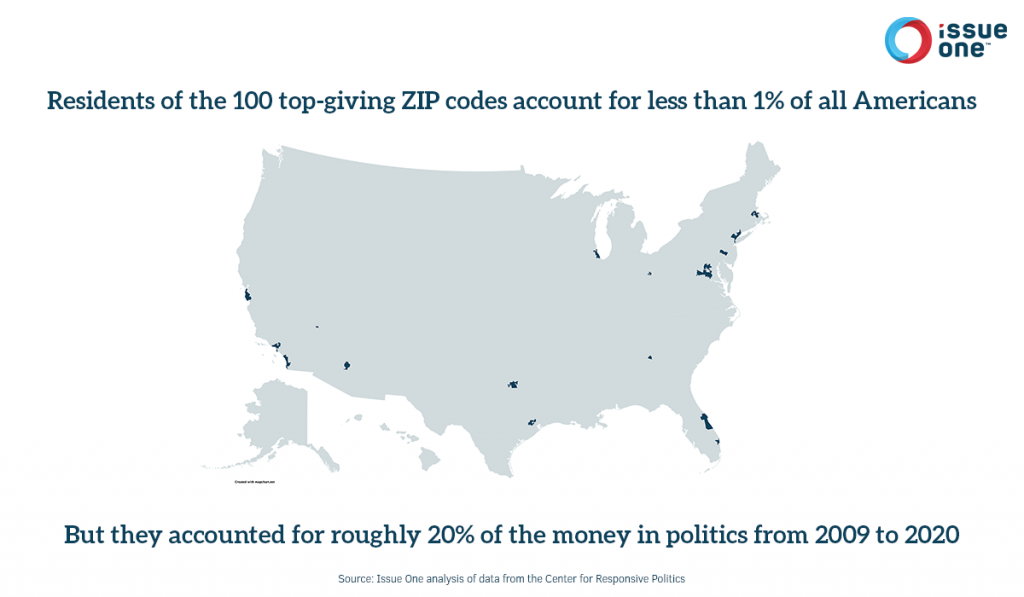
This report was written by Michael Beckel. Katya Ehresman, Devon Powers, Amisa Ratliff, and AP Velasco contributed to this report. Graphics by Sydney Richards.
